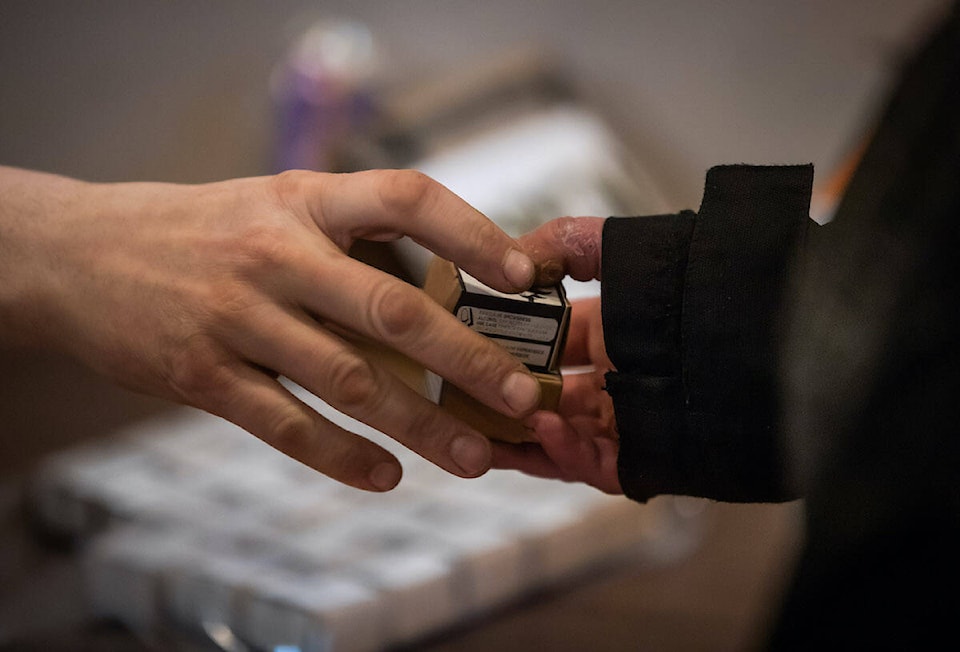Six British Columbians died from toxic drug poisonings each day in February, according to latest BC Coroners Service data.
A total of 174 people died – including six people under the age of 19 – new statistics released Tuesday (April 12) show.
That makes February the 17th consecutive month in which more than 150 lives were lost in B.C. to the toxic drug supply.
While Vancouver, Surrey and Victoria continue to see the lion’s share of deaths, it is parts of the Interior – specifically in the Thompson Cariboo area and northern B.C. – seeing the highest rates of death, at 76.2 per 100,000 residents and 73.6 per 100,000 residents, respectively.
Illicit fentanyl continues to be the predominant substance found in post-mortem toxicology testing and the service said 2022 results are showing higher concentrations than previous trends. Benzodiazepine analogues, which cannot be curbed by naloxone, are also being detected in more tests, in particular etizolam, which can be used to treat anxiety and insomnia.
In a statement Tuesday, chief coroner Lisa Lapointe said that there continues to be no evidence that prescribed safer supply or diverted prescription opioids are contributing to the illicit-drug crisis.
“I recognize that the concept of safer supply is difficult for some to understand given the many decades of a punitive, enforcement-based approach to substance use,” Lapointe said.
“However, unless we act quickly to provide a safe, regulated source of the drugs people are using in every community across our province, people we love will continue to be vulnerable to the profit-driven, chaotic illicit drug market.
“Safer supply, along with decriminalizing possession of drugs for personal use, reducing stigma and building an evidence-based system of treatment and recovery are critical components for reducing the terrible harms and fatal consequences of the toxic illicit drug market.”
There continues to be no reported deaths at supervised consumption or drug overdose prevention sites.
B.C. was the first province to introduce a permanent prescribed safer supply last July. This included nurse practitioners and doctors being permitted to prescribe medication alternatives amid sky-rocketing drug deaths.
Mental Health and Addictions Minister Sheila Malcolmson said in a statement Tuesday that the overdose crisis “continues to deepen, despite everything we’re throwing at it.”
The Mental Health and Addictions Ministry said that from March 2020 to December 2021, a safer supply has been accessed by more than 12,000 people, with 7,000 of them getting a prescription opioid.
Provincial health officer Dr. Bonnie Henry said last summer that an estimated 60,000 British Columbians had a substance use disorder.
Malcolmson said she has also been working with her federal counterpart to try and advance the province’s application on decriminalization so people who possess small amounts of drugs for personal use would not be charged.
She said decriminalization would be “another way to more clearly and firmly assert that substance use at a personal level is a health-care matter, not a matter for the criminal justice system.”
– with a file from The Canadian Press
@ashwadhwani
ashley.wadhwani@bpdigital.ca
Like us on Facebook and follow us on Twitter.



